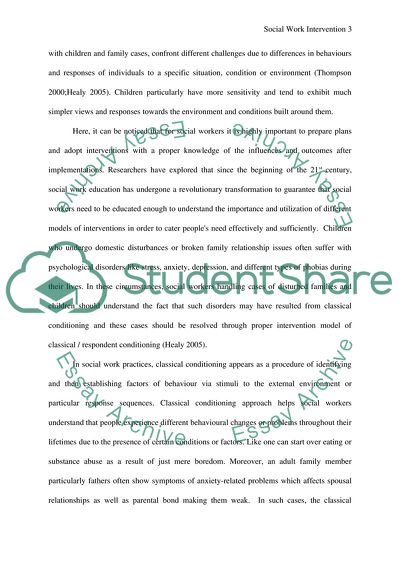Cite this document
(Social Work Interventions Term Paper Example | Topics and Well Written Essays - 1750 words, n.d.)
Social Work Interventions Term Paper Example | Topics and Well Written Essays - 1750 words. Retrieved from https://studentshare.org/social-science/1791926-compare-and-contrast-two-specific-approach-or-model-of-intervention-that-influences-social-work-practice-with-children-and-their-families-useing-a-case-scenario-comment-on-how-this-approach-or-model-could-help-improve-outcomes-for-children-and-their-fami
Social Work Interventions Term Paper Example | Topics and Well Written Essays - 1750 words. Retrieved from https://studentshare.org/social-science/1791926-compare-and-contrast-two-specific-approach-or-model-of-intervention-that-influences-social-work-practice-with-children-and-their-families-useing-a-case-scenario-comment-on-how-this-approach-or-model-could-help-improve-outcomes-for-children-and-their-fami
(Social Work Interventions Term Paper Example | Topics and Well Written Essays - 1750 Words)
Social Work Interventions Term Paper Example | Topics and Well Written Essays - 1750 Words. https://studentshare.org/social-science/1791926-compare-and-contrast-two-specific-approach-or-model-of-intervention-that-influences-social-work-practice-with-children-and-their-families-useing-a-case-scenario-comment-on-how-this-approach-or-model-could-help-improve-outcomes-for-children-and-their-fami.
Social Work Interventions Term Paper Example | Topics and Well Written Essays - 1750 Words. https://studentshare.org/social-science/1791926-compare-and-contrast-two-specific-approach-or-model-of-intervention-that-influences-social-work-practice-with-children-and-their-families-useing-a-case-scenario-comment-on-how-this-approach-or-model-could-help-improve-outcomes-for-children-and-their-fami.
“Social Work Interventions Term Paper Example | Topics and Well Written Essays - 1750 Words”. https://studentshare.org/social-science/1791926-compare-and-contrast-two-specific-approach-or-model-of-intervention-that-influences-social-work-practice-with-children-and-their-families-useing-a-case-scenario-comment-on-how-this-approach-or-model-could-help-improve-outcomes-for-children-and-their-fami.


